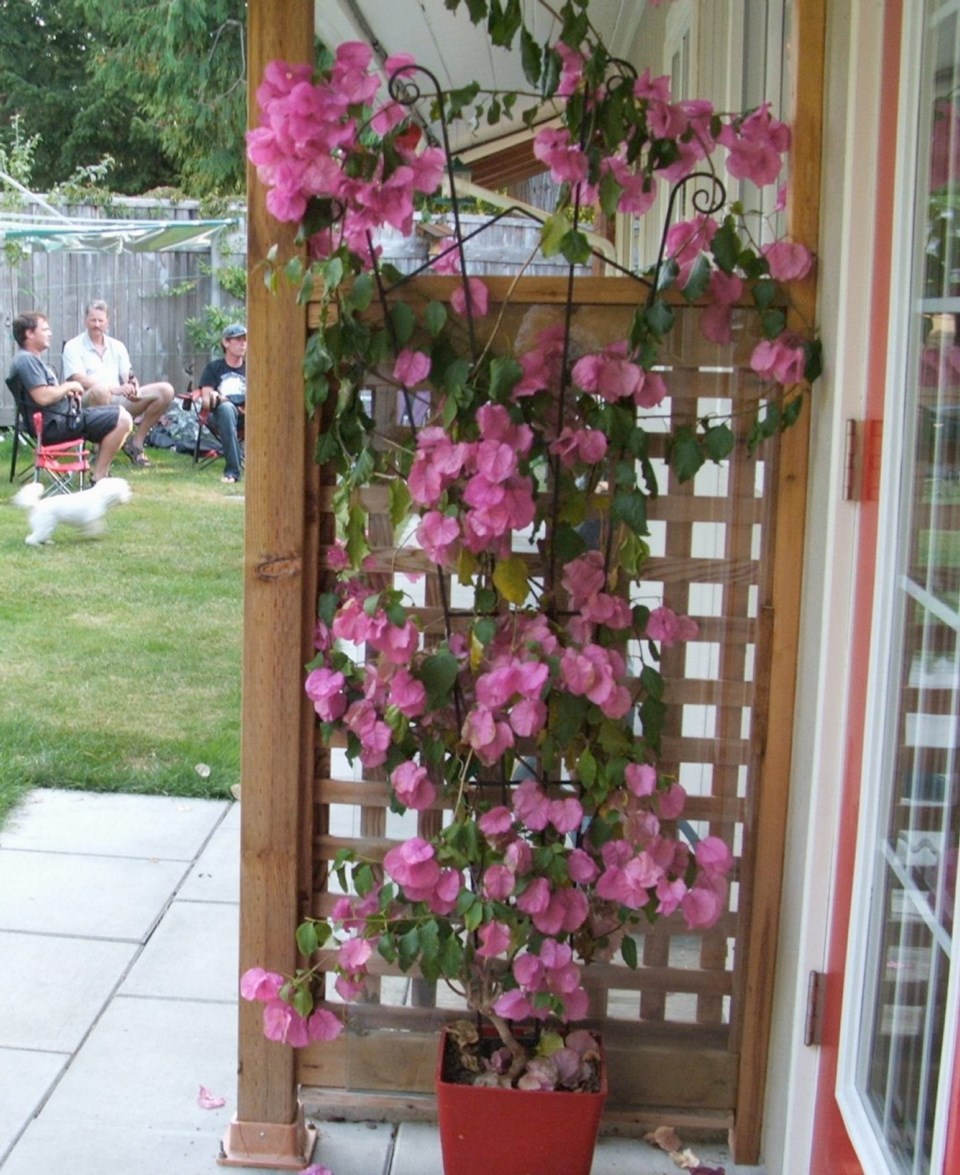Dear Helen: My potted bougainvillea was beautiful through the summer, but now that nights are colder, I need to know how to keep the plant safe over the winter.
Do I bring it indoors? How do I care for it in winter and introduce it successfully back outdoors in the spring?
E.R.
As a climbing subtropical, bougainvillea needs protection from frost. As soon as overnight temperatures dip toward freezing, and preferably as they go below 8 C, the plants should be moved into cool but frost-free conditions.
The simplest way to do this is first to trim the plant back enough to make it manageable for moving indoors. Clean and tidy it by removing dead bits and cleaning off the soil surface. Find the brightest, coolest spot indoors for the plant. Ideal is a south-facing window and a temperature range of 8 to 10 C.
The aim over the winter is not to keep a bougainvillea growing and blooming, but just to keep it alive. Cool temperatures and very modest watering accomplish this.
Early in the spring, as light levels elevate, keep the plant in the sunniest spot possible and prune.
You can prune the branches back by a third. Bougainvilleas bloom on new wood.
Repot if desired, keeping in mind that bougainvilleas are best kept a bit pot-bound. Increase watering. Place the plant back outdoors when all danger of frost is over.
A former next door neighbour had a beautiful potted bougainvillea that he kept successfully over the years using this regimen.
Dear Helen: I have grown garlic successfully for years, but perhaps I went wrong with the timing this year. The garlic I planted in mid-September has sprouted and is growing. Is all lost?
Y.A.
I’ve had that happen only once, in a new variety I was trialling. That experiment did not go well, but if your garlic is a well-established, reliable variety such as Red Russian or Porcelain (also called Music), your planting should be fine. Garlic is very hardy.
The top growth will not likely be harmed by winter weather.
The ideal planting time for the largest possible heads of garlic is the third week in September through mid-October, though later plantings work too.
Dear Helen: We have a large lemon cypress, around two metres tall, that has outgrown its space and expanded out too much onto the driveway. When should we prune it?
G.M.
Ideally, lemon cypress Cupressus macrocarpa (‘Goldcrest Wilma’) is pruned from the youngest stages, primarily in early spring and summer, to maintain a dwarf habit and to encourage the production of fresh growth.
Drastic pruning is not recommended, but established trees can be pruned selectively by removing unwanted branches. Make the cuts where these branches meet the limb. Otherwise, avoid cutting into old growth.
To maintain symmetry in the plants, give side foliage a light trim after taking out branches that are out of place or too long.
Dear Helen: Should I plant the seeds that I collected from my ornamental onions now, or wait until spring? If I plant now, will I get flowers in the spring, or is it best to plant bulbs?
K.B.
Seed harvesting from ornamental onions (alliums) is done as the seed capsules break open, preferably on a dry, sunny day.
The seed heads are removed and brought indoors to dry off thoroughly before the seeds are separated out and stored in a uniformly cool place, in labelled envelopes, for the winter.
Plant the seeds in the spring. It takes several years for seeded ornamental allium plants to develop bulbs of flowering size, and some named varieties will not produce blooms exactly like those of the parent plant when grown from seed.
Purchasing and planting ornamental onion bulbs in the fall is the simplest and quickest way to create a display of bloom, unless you wish to discover interesting “off” types or produce an extensive display of spring allium flowers in a few years, at no extra cost.
Garden events
Mason bee maintenance. The Horticulture Centre of the Pacific, 505 Quayle Rd. in Saanich, is offering a class on keeping mason bee cocoons healthy. Expert Tom Lahey will cover how to harvest the cocoons from various types of homes. Participants will clean the cocoons and homes, and learn how to overwinter the cocoons. Bring your own cocoons if you have them; otherwise, they will be provided for practising on. Sunday, Oct. 28, 1 to 3 p.m. Cost to HCP members $20, others $25.



